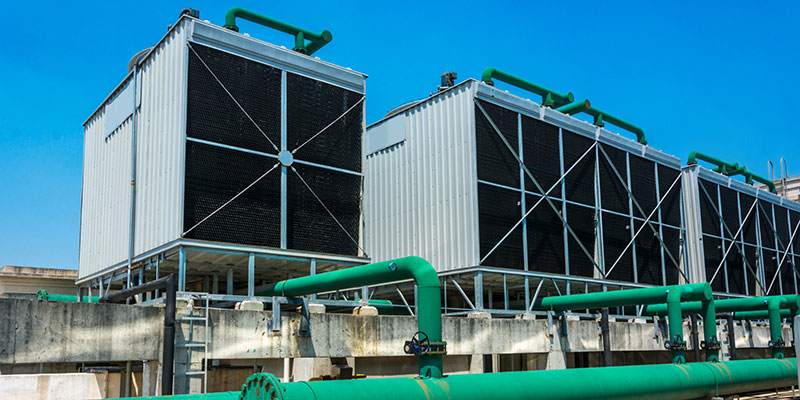Many data centers, which generate a lot of heat, rely on water-based cooling systems.
Reliance on nontraditional water sources, like water reuse, is increasing
Data centers are springing up around the world to support ever-growing reliance on computers. While data centers have long faced scrutiny for the amount of electricity they use, the public eye is now slowly turning to the large amounts of water they use for cooling. Soon, water risk may be the largest problem data centers face.
While data centers account for only a small portion of global water use, their withdrawals can cause serious problems locally by depleting supplies of fresh water already stressed by other human activities and climate change. Approximately 20% of data centers in the United States now rely on watersheds that face moderate to high stress.
The sector faces a dilemma: Either use less water and more electricity or vice versa, and water is still the less expensive of the two.
In the U.S., data center water consumption is approximately 450 million GPD (1.7 billion L/d). As of 2021, there were approximately 2,600 data centers in the U.S., with many located around Dallas, San Francisco, and Los Angeles. An average data center uses 300,000 GPD (1.135 million L/d) of water, as much as used by 1,000 homes in the U.S.
Direct water use puts data centers in the top 10 thirstiest industrial and commercial sectors. As much as 57% of data center cooling water comes from drinking water sources and indirectly from non-renewably generated electricity as “virtual water.”
While proximity to users is still the prime criterion for siting data centers, proximity to ample water supplies is expected to grow in importance as a factor. In the next decade, “Water is going to be king,” said Kyle Myers, a vice president at data center company CyrusOne.
Pushback and Adaptation
Dr. Arman Shehabi of Lawrence Berkeley National Laboratory is a researcher known for extracting the first reliable energy usage figures out of American data centers, but he warned data center water usage data is far less reliable. Few companies have been forthcoming with information. A recent ESG assessment of 122 data center companies found that only 16% had disclosed information on their water management.
Nonetheless, data center companies are now facing opposition from municipalities and water activists. For example:
- Chandler, Arizona, passed an ordinance in 2015 that allows officials to deny applications for new water uses if they do not mesh with the city’s economic development plan.
- After a two-year struggle with South Carolinians concerned about aquifer depletion, in 2019 Google agreed to limit its pumping of groundwater.
Companies are learning quickly and strategizing on the fly, remaining tight-lipped about their water plans because they have not been finalized yet. But, a great deal of innovation appears to be going on behind the scenes.
Some of the tech giants, however, have been talking. Facebook’s parent company, Meta, which operates a data center in Oregon, has vowed to go water-positive by 2030. The company uses outdoor air for cooling at most of its data centers.
Other big tech companies have unveiled similar plans for returning more water than they take. Partnerships with local water utilities, better reuse systems, and less water-intensive cooling technologies all have potential to help data center companies go water-positive.
Fluence is here to help explore how water reuse and other nontraditional water sources can increase data-center sustainability. And, Fluence’s Water Management Services can put your sustainable water management plan into action with no upfront investment. Contact Fluence to learn more.

